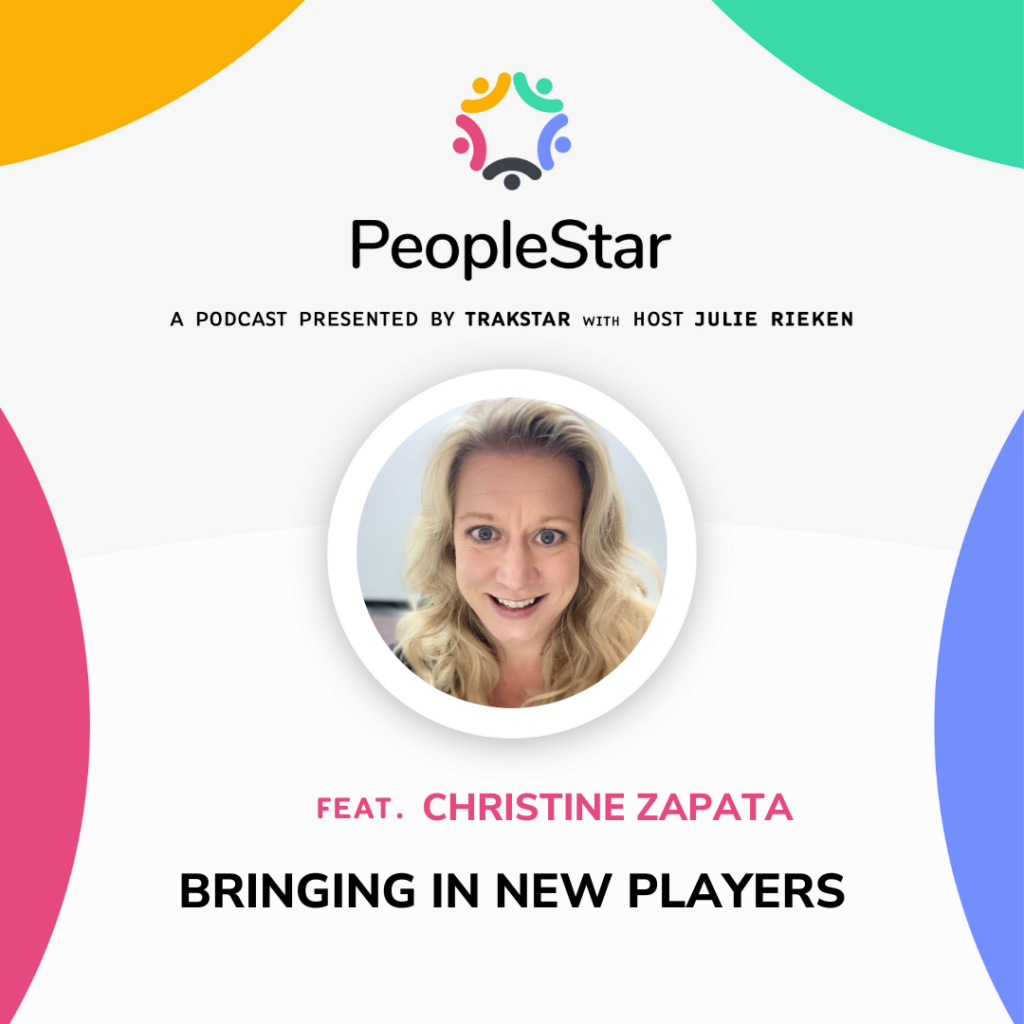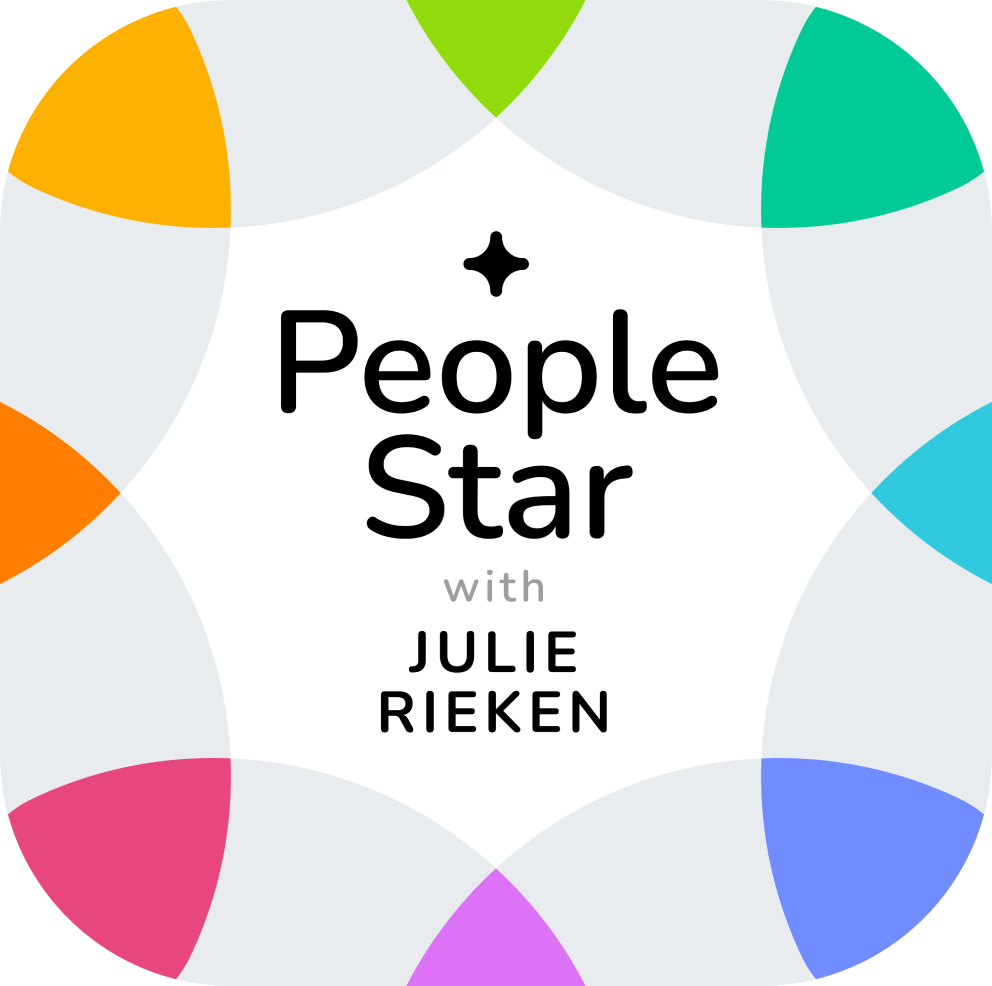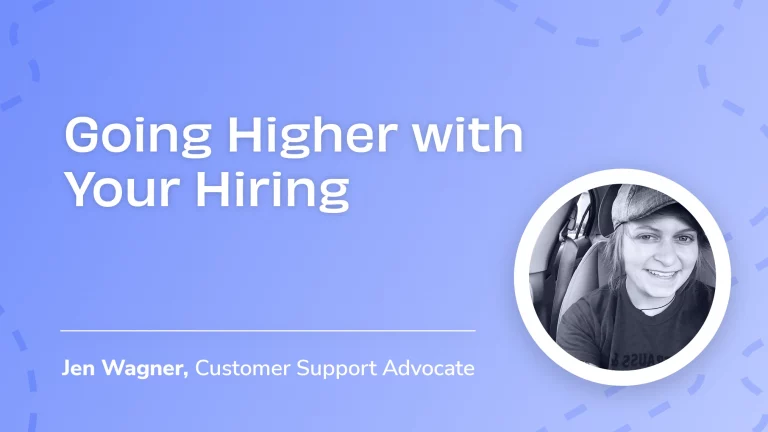PeopleStar_Christine Zapata: this mp3 audio file was automatically transcribed by Sonix with the best speech-to-text algorithms. This transcript may contain errors.
PeopleStar Intro/Outro:
Welcome to the PeopleStar Podcast. We deliver leadership perspectives from industry experts on their people, architecture, routines, and culture as they solve HR's newest challenges. And now your host, Julie Rieken.
Julie Rieken:
Good day, podcast listeners! Julie Rieken, host of PeopleStar Podcast. Today, I'm thrilled to have Christine Zapata with us. She is the VP of HR and Talent Development at Starplast USA, which is a plastics manufacturing organization out of Houston. And they're at a really exciting time in the company's life, operating a bit as a startup and moving forward into a lot of growth. And that means that Christine is building out a lot of things to get ready for this, and that's an exciting place to be. So, Christine, I'm thrilled to have you as a guest.
Christine Zapata:
Thank you very much, Julie, and glad to be here.
Julie Rieken:
We have exciting things to talk about. And I'm thinking about organizations that are growing, and when you think about organizational charts and how you start building for growth in an organization, there's a lot to think about. And so I wanted to talk to you today just about, what does that look like? Can you talk to me about who is Starplast today, where do you want to be, and what are you thinking about as you build this organization from an HR and people standpoint?
Christine Zapata:
Sure, that's fantastic. Starplast USA, we have been here in the United States since 2019, and we do have a corporate office in Israel, but we feel like we're a startup. We're allowed to, we're in our business as we need to support the growth that we have projected for the next 3 to 4 years. And what we've been doing recently is bringing in corporate level managers, directors, vice presidents, to bring a corporate feel to a family-owned business so that when we bring new people in, they feel that there is a structure, that there's a vision, that there's something that they can grab onto to feel like they're part of the Starplast family. And so the CEO has done a very good job of bringing in some high-level personnel, including myself. I've been here since November, so am new to the organization. And what we're trying to do is create structure and create the management that we need to move the organization forward to support that growth.
Julie Rieken:
That's amazing, and that's a really big transformation going from a family kind of a business into one that's prepped for even bigger growth. So it sounds like you've been added. Can you just tell us what does the org chart look like in the future? What are the how are you thinking about building out these areas? Do you have specific positions that you're building out new departments? What does that look like for you?
Christine Zapata:
We are looking at building out the support roles. That means we have our front-line employees, we've got our assemblers, our technicians, but what we're looking at is growing at that supervisor level and above. So being a smaller, leaner organization that we have been, we have a lot of managers and upper-level leadership that are actually caught in the day-to-day duties. And so when we look for strategic initiatives and strategic thoughts and mindsets, it's very difficult for some of our senior leaders to get to that level because they are dealing with day-to-day. So what we're focusing on is bringing in a managerial level below the leadership to handle those day-to-day, to deal with the employee relations issues, and to really focus on the production at the manufacturing environment so that our senior leaders can take a step back, look strategically, and make sure that we're putting procedures in place to support that growth. So we've done a spans and layers exercise, and what we have found is we are lacking at that manager and even director level within the organization, so we go from supervisor all the way up to director in some of our departments. So the focus is going to be on the production side and then purchasing. We purchase commodities, we purchase resin for our manufacturing facilities and we want to make sure that we are focusing on getting best prices, best terms. So we are also building out our purchasing and materials management.
Julie Rieken:
Christine, you used a term that I, maybe I should have heard of, but I've not heard of it, spans and layers. Can you just tell me what is spans and layers?
Christine Zapata:
Sure, spans and layers is taking the organization and the chart and looking at levels in the organization from CEO all the way down to the frontline employees and looking at what layer they are in the organization. So we have all the way from CEOs to VPs and it's taking that structure down and looking at how deep the organization goes, how many people are reporting up to certain supervisors and leaders, and determining is that too much, is it not enough? What does it look like? Do we have a manager that doesn't manage anybody, and why is that? So it's really looking at the different layers of the management structure to see where we're lacking.
Julie Rieken:
That's an enormous project. That's a big strategic project. How do you start that? How did you start it?
Christine Zapata:
It was really looking at the org chart with the CEO, printing it out, starting to draw, going back to old school where you're writing on a piece of paper, and determining where that growth is going to be. I will say, at Starplast, a lot of our growth is going to be in e-commerce. We sell to Walmart, we sell to Bed, Bath, and Beyond, we sell to these retailers, but our e-commerce, where we're actually selling on Amazon.com or Target.com, it's an area of growth. And so it's really putting people in place and saying, okay, we've got a new department now, we need a leader for that department, and what does it look like and who do we need in that department to support these initiatives? So it's really sitting down, drawing, writing ideas, and then from there, teaming up with managers from the recruiting standpoint. Okay, we've got positions now, let's recruit. And what does that look like for a candidate to be successful in this organization?
Julie Rieken:
Ooh, there's a lot of work behind that too. There's a lot of job descriptions, there's a lot of, maybe it's spans and layers. Again, once you build that out, when we hire for this, what are we looking for? Can I divert a little bit here? Just ask, when you think about, you just said you want someone to be successful in that role, how do you know who will be successful? This is a job in and of itself determining the skill set. How have you thought about that?
Christine Zapata:
We have put in place behavioral-based interviewing, which, if you're not familiar, is, tell me about a time when and it, past behavior does drive future performance to see how they've handled positive and negative situations over their career. So it starts with the interview process. So not only is the interview process happening at the HR level, but of course at the manager level, and it's then training managers on how to interview and how to find the nuggets that you need to say this is the right person for our team. And it's difficult because you don't always make the right hire, but if you really dive into somebody's past performance and then look at what's important to that role and to the organization, I feel you can get a better candidate experience not only for the company but for the candidate.
Julie Rieken:
Boy, that's, there's so much there and I know how much work that is, Christine, and I just want to congratulate you on doing all that work, there's a lot behind that. Not as simple as the few sentences that we've used to describe it here. So let's just say you've been looking for somebody, do you have any stories about great employees that you have found through this process, and maybe, or a new role and how that has changed the org for the better through this process?
Christine Zapata:
I'm going to talk personally about my team because I'm the one who drove that interview process, used those techniques, and I have found some great employees over the years, basically using again, tell me about a time, give me an example, let me hear from you what you've experienced and how does that fit into the needs of the organization. And I've had some wonderful employees, two that I'm thinking of specifically came from Stanley Black and Decker, and one that worked for me is still there. She's moving into from a manager to a director level, so I've seen the promotions happen. It was finding, again, in my opinion, the person who's willing to do whatever it takes to be successful at that job and be willing to ask for help when we're asking them to do something that may be out of their wheelhouse, but I've had a success there. At a previous company, I've had one of my employees again now move into a director level, started out as an HR generalist, and is now a director. So I feel like that's a success story of finding the right fit and the right attitude. I have a new generalist with me, she is very young in her career and she's willing to do whatever it takes and to do whatever I need her to do and she's willing to learn. And so I look for those attributes during the interview process as well, and I have found in my personal team that has been very successful.
Julie Rieken:
Gosh, I think that's so important. I've been thinking a little bit about, just as a sidebar, the whole AI piece, and the skill set, and how we screen for skills. But something you've said, I think we can never remove the idea of the willingness to learn, the willingness that human element of, I'm willing to learn, I'm willing to do what it takes, and that's something that that you're screening for and have found great success in. And no matter what's on a resume, finding that humanity behind the resume sounds like a place where you've had great success with your questions.
Christine Zapata:
Yes, it is. I've been very successful, and of course, I use that throughout the rest of the organization, but like I said, I like to talk personally about my team. I'm very proud of the teams that I've led over the years and really have had great success.
Julie Rieken:
I love that. So now let's just talk about, you found some great people, you've done spans and layers, you've realized the spaces that you need to grow, you're hiring more corporate people that can help you build out the processes so that people can come in and feel like there's a structure there, you've got a great behaviorally-based methodology for hiring people, and now you want to keep them. How do you recognize people at Starplast? How do you keep these great people as you found them that you want to continue to grow with you in the org?
Christine Zapata:
Great question. Turnover in manufacturing, can be high, and so my goal is to make sure we reduce that number and we start with some basics. We want to reward the behavior that we want to continue. That's kind of an obvious statement. It's a good behavior, let's reward for it. And we do simple things such as attendance bonuses. Obviously, we need people there to run the machines, and so there's attendance bonuses and basically celebrating the successes. I'm also responsible for safety workers' compensation here, and so when we have a month with recordable incident, we celebrate it, we get breakfast, we'll get lunch. And as that grows, you know, we may get down to where we've got managers serving steaks to the employees. So it's, it really is some simple ideas, but what we're trying to do is celebrate the small successes on a regular basis and not just wait for a big event. But when somebody does something well, we want to encourage our supervisors to recognize that so that they feel like they're empowering the employee to continue that behavior and that their peers see that recognition. So we will recognize people during staff meetings, during our town halls, and it's really, again, highlighting the behaviors we want to see continue. And then we're looking at more robust employee recognition programs, but right now, it's just teaching our employees to celebrate the small successes.
Julie Rieken:
I love that. Christine, you have had a really interesting personal journey. You mentioned you were at Stanley Black and Decker, this is an organization that's well-established, and you're at Starplast and this is a startup, Let's grow and big mindset. That's a big shift. Can you just tell us a little bit about that?
Christine Zapata:
It is a big shift, and during the discussion with the CEO during my interview, I knew there was some risk coming here because it's, there's just so much happening right now. And coming from Stanley, the benefit is there was structure there. Big company, over 60,000 employees, there's structure, we had corporate, we had the policies established for us. And so I have that in my toolbox and all my years of experience, but I finally had the opportunity to come here and make it my own. And so that opportunity to say, Look, I'm going to take what I learned, from a Stanley or from another big company, and implement it here and make it my own, it was worth the risk of a startup. And the journey has been wonderful ever since.
Julie Rieken:
I love that. It's courageous and it's entrepreneurial for you to do this, and I'm just wishing the best for Starplast. I'm so excited to see how the company will grow, and this is a great role for you, and this will be a fun journey.
Christine Zapata:
Yes, thank you very much. I appreciate that.
PeopleStar Intro/Outro:
Thanks for listening to the PeopleStar Podcast. For the show notes, transcript, resources, and more ways to get a seat at the table, visit us at TrakStar.com/Podcast.
Sonix has many features that you’d love including upload many different filetypes, automatic transcription software, world-class support, enterprise-grade admin tools, and easily transcribe your Zoom meetings. Try Sonix for free today.




